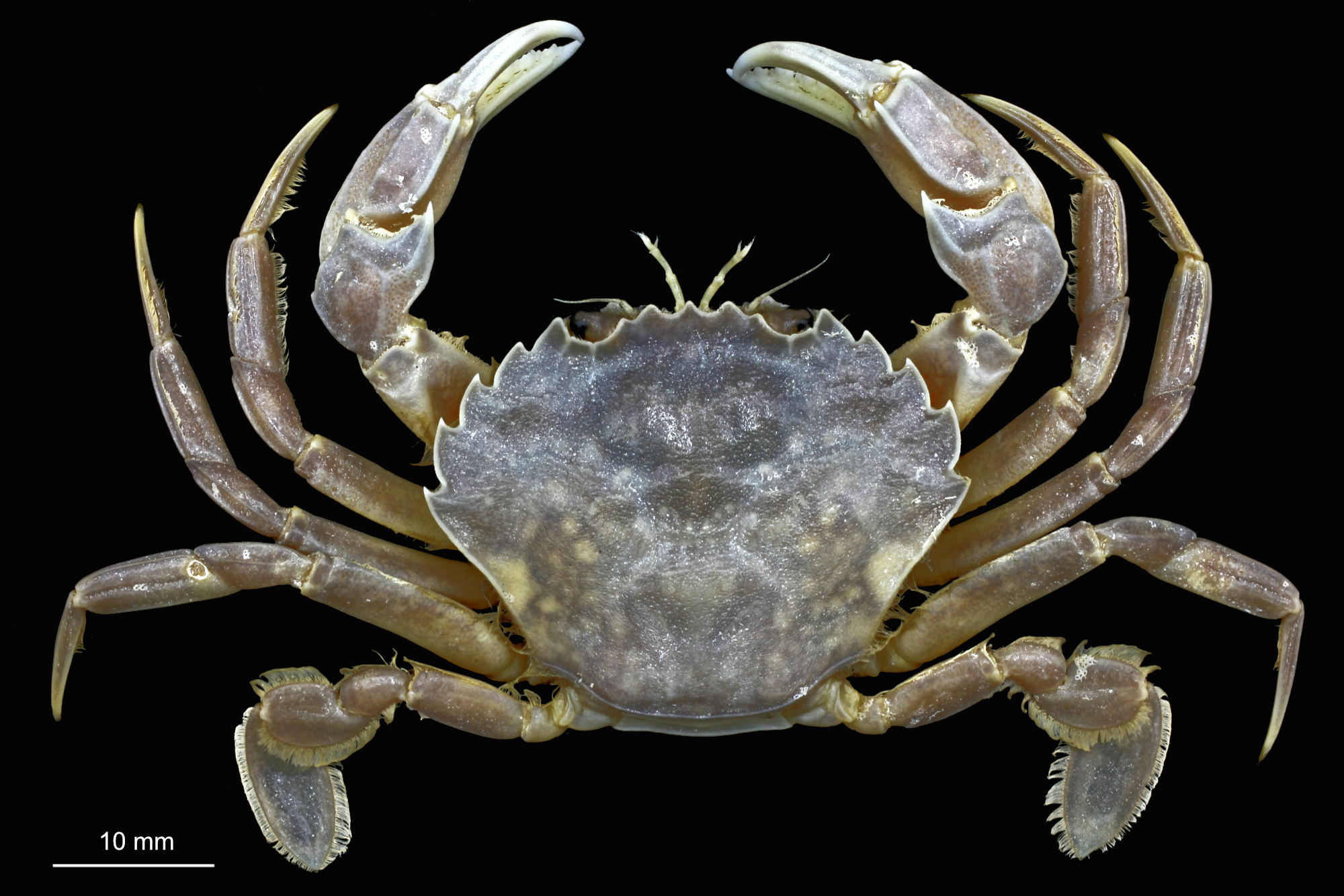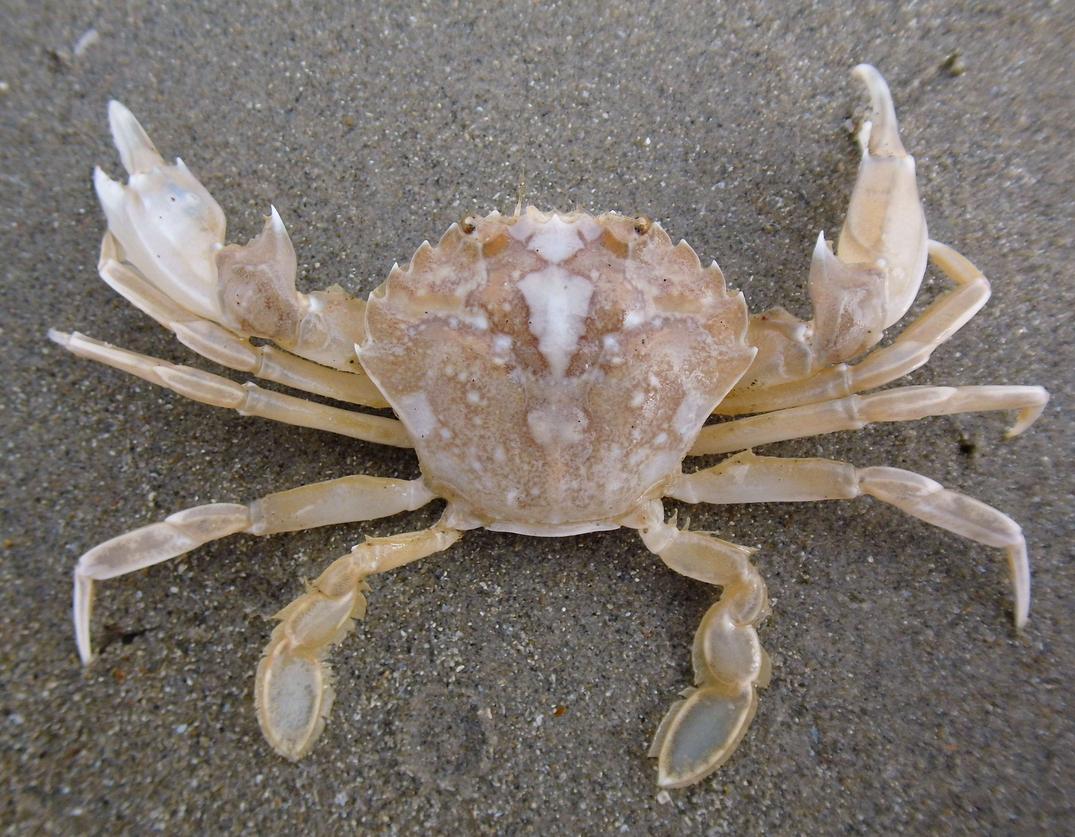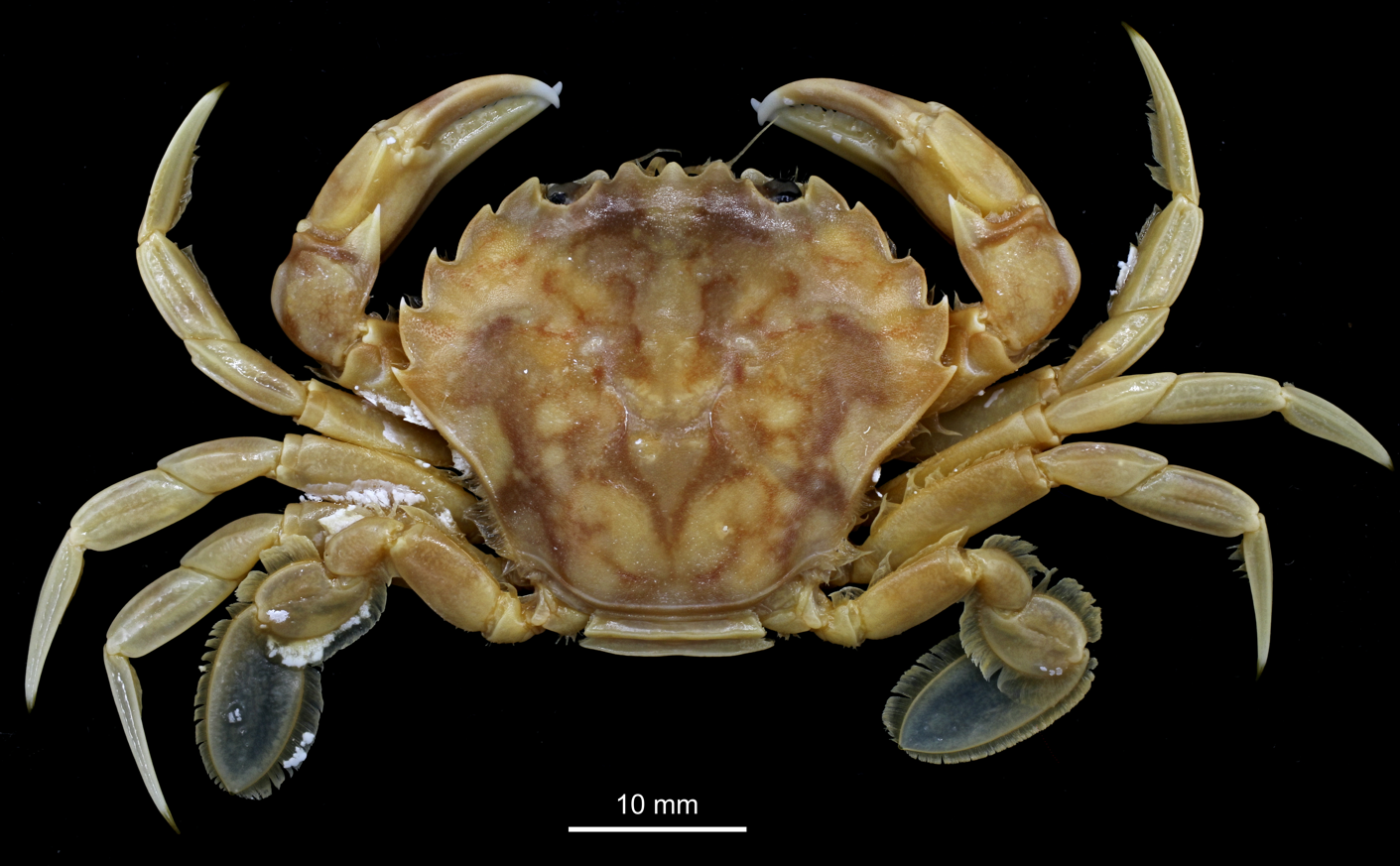New crab species discovered on Belgian beaches

A new crab species, Polybius dioscurus, has been discovered on Belgian beaches. "This exciting discovery shows that even well-explored areas can surprise us," says Cédric d'Udekem d'Acoz from the Institute of Natural Sciences.
The new species was identified through a comprehensive taxonomic study combining molecular and morphological analysis. The research, conducted by biologists from four countries, including d'Udekem d'Acoz, unveiled that the littoral crabs previously identified as Polybius vernalis actually comprise two genetically distinct species. The true Polybius vernalis is endemic to the Mediterranean, while the newly discovered Polybius dioscurus inhabits the northeastern Atlantic and the entrance to the Mediterranean, just beyond Gibraltar.

Polybius dioscurus is a relatively common species, characterized by a greyish mottled or marbled carapace that can reach up to four centimeters in width. This species can often be found on Belgian beaches, particularly between Nieuwpoort and De Panne, frequently appearing in the nets of prawn fishermen.


The name "dioscurus" was chosen in reference to the Dioscuri, the twin half-brothers Castor and Pollux, due to its similarity to the Mediterranean crab Polybius vernalis. Interestingly, despite its morphological similarities with Polybius vernalis, Polybius dioscurus is genetically closer to Polybius marmoreus, a species recognized for over 200 years. The differences between these species are subtle, highlighting the importance of genetic analysis in modern taxonomy.
The study has been published in European Journal of Taxonomy.